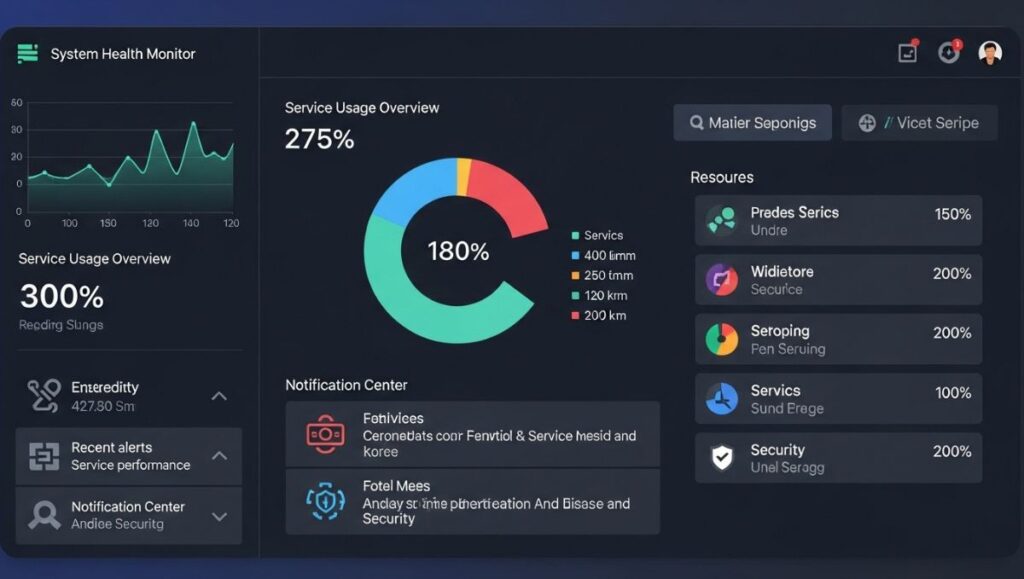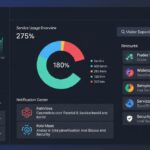In the digital era, where scalability, flexibility, and integration define success, Service-Oriented Architecture (SOA) has become one of the cornerstones of modern computing. SOA allows applications to communicate through standardized interfaces, enabling organizations to build complex systems by combining modular services.
With the introduction of SOA OS23, a next-generation operating system built around SOA principles, businesses and developers are entering a new era of distributed computing — one where services, microcomponents, and APIs operate seamlessly across devices, networks, and cloud environments.
SOA OS23 is designed to simplify system integration, enhance performance, and enable dynamic scalability across multiple layers of infrastructure. It represents the convergence of traditional OS design with cloud-native and service-driven technologies.
What Is SOA OS23?
SOA OS23 stands for Service-Oriented Architecture Operating System 2023. It’s an advanced operating system framework or platform architecture that applies SOA principles to manage, deploy, and integrate digital services efficiently.
Unlike conventional monolithic operating systems, which treat applications as standalone executables, SOA OS23 views every system component — from data handling to network communication — as a service.
This modular design makes it possible to:
-
Build distributed systems with minimal redundancy.
-
Integrate diverse applications through APIs and microservices.
-
Scale operations dynamically across cloud or hybrid environments.
-
Improve fault tolerance and system reliability.
In essence, SOA bridges the gap between traditional OS architecture and modern cloud-native infrastructure.
The Foundation of SOA OS23: Service-Oriented Architecture Explained
Before diving into the specifics of SOA OS23, it’s essential to understand Service-Oriented Architecture (SOA) itself.
SOA is a software design paradigm that structures an application as a collection of interoperable services. Each service performs a distinct function and communicates with others through a standard protocol, often via APIs or message queues.
Key SOA characteristics include:
-
Loose Coupling – Services are independent and communicate without being tightly linked.
-
Reusability – A single service can be used across multiple applications or systems.
-
Interoperability – Services use standardized protocols (like REST, SOAP, or JSON-RPC) to exchange data.
-
Discoverability – Services can be located, deployed, and reused across the organization.
-
Scalability and Modularity – New services can be added without disrupting existing ones.
SOA OS23 takes these principles and embeds them at the operating system level, providing a foundation for distributed, service-based computing.
Core Features of SOA OS23
SOA introduces a wide range of features designed to enhance efficiency, reliability, and integration across computing environments.
1. Service-Level Modularity
Unlike traditional OS kernels that manage monolithic processes, SOA treats every component — file system, driver, security policy, or network handler — as a microservice. This modularity makes system updates faster, minimizes downtime, and improves resilience.
2. Cloud-Native Integration
SOA OS23 is optimized for cloud deployment. It supports containerized services through Docker or Kubernetes and integrates natively with leading cloud providers (AWS, Azure, Google Cloud).
3. API-Centric Design
At its core, SOA OS23 runs on API-based communication. Every function can be accessed through secure APIs, allowing seamless integration with third-party tools, IoT systems, and enterprise software.
4. Advanced Security Framework
SOA OS23 employs Zero Trust security architecture, with built-in identity verification, encryption, and access control at the service level. Each microservice has its own authentication tokens and privilege boundaries, reducing attack surfaces.
5. Real-Time Monitoring and Analytics
Using integrated observability tools, SOA OS23 continuously monitors service health, resource consumption, and network latency. Predictive analytics powered by AI identify performance bottlenecks before they affect system operation.
6. Adaptive Resource Management
Dynamic resource allocation ensures efficient performance. The system automatically scales CPU, memory, and storage resources based on service demand, enabling cost-efficient scalability in hybrid or multi-cloud setups.
7. Compatibility and Portability
SOA OS23 supports cross-platform execution — whether running on bare metal servers, virtual machines, or containers. It’s compatible with standard Linux/Unix binaries and supports popular programming environments like Python, Java, Go, and Rust.
How SOA OS23 Works
1. Microkernel with SOA Layer
At its heart, SOA OS23 employs a microkernel architecture — a minimal core that handles basic system functions such as scheduling and memory management. The SOA layer on top orchestrates services, ensuring smooth communication and modularity.
2. Service Registry and Discovery
Every component registers as a service within the system’s Service Registry. When another process needs functionality, it queries the registry to locate and connect to the appropriate service dynamically — similar to how cloud microservices operate.
3. Service Orchestration Engine
An internal orchestration engine manages dependencies, workflows, and communication protocols between services. It ensures that each service operates independently but remains synchronized within the overall system.
4. Policy-Driven Configuration
SOA introduces policy-based automation. Administrators define service-level policies — for example, “auto-scale storage when utilization exceeds 80%” — which the system enforces autonomously.
Benefits of SOA OS23
SOA OS23 delivers transformative benefits across industries, especially for organizations seeking agility, resilience, and scalability.
1. Flexibility and Scalability
Because every component is service-based, organizations can add, remove, or upgrade modules without downtime. This flexibility makes SOA ideal for large enterprises and cloud-native applications.
2. Faster Development and Deployment
Developers can focus on individual services rather than rebuilding entire systems. This accelerates software updates, continuous integration, and continuous delivery (CI/CD) pipelines.
3. Enhanced System Resilience
If one service fails, others continue functioning independently — preventing cascading system failures and improving uptime.
4. Cost Efficiency
SOA OS23’s adaptive resource allocation ensures that computing power is only used when needed, reducing infrastructure and energy costs.
5. Seamless Integration
Through standardized APIs, SOA OS23 connects easily with legacy systems, modern applications, IoT devices, and cloud platforms.
Use Cases of SOA OS23
SOA OS23 is designed to serve a broad range of industries and use cases where scalability, interoperability, and automation are critical.
1. Enterprise IT Infrastructure
Large organizations use SOA OS23 to manage enterprise applications, automate processes, and integrate legacy systems with modern APIs.
2. Cloud Computing Platforms
Cloud providers and DevOps teams leverage SOA for container orchestration, service discovery, and multi-tenant management.
3. Internet of Things (IoT) Systems
IoT ecosystems benefit from SOA OS23’s distributed service architecture, enabling efficient data exchange and device coordination.
4. Financial Services
Banks and fintech firms use SOA OS23 to manage high-speed transactions securely and integrate multiple financial APIs for real-time processing.
5. Telecommunications
Telecom providers use SOA OS23 to run network functions as independent services, improving uptime and reducing maintenance costs.
Security Architecture of SOA OS23
Given the increasing complexity of digital ecosystems, cybersecurity is a core focus of SOA OS23.
1. Zero Trust Model
The OS applies Zero Trust principles by authenticating and authorizing every service interaction — no entity is trusted by default, even within the system.
2. Encrypted Service Channels
All service-to-service communication occurs through encrypted channels (TLS/SSL) to prevent data interception or spoofing.
3. Automated Threat Detection
Built-in AI-powered intrusion detection systems monitor activity logs, identifying anomalies in real time and isolating compromised services.
4. Role-Based Access Control (RBAC)
Administrators can assign granular permissions to each user or service, ensuring only authorized entities access sensitive data.
How SOA OS23 Differs from Traditional Operating Systems
| Feature | Traditional OS | SOA OS23 |
|---|---|---|
| Architecture | Monolithic or layered | Service-oriented (modular) |
| Scalability | Limited | Dynamic, elastic scaling |
| Integration | Manual, API-limited | API-native and auto-discoverable |
| Security | System-level | Service-level (Zero Trust) |
| Maintenance | Complex updates | Seamless modular updates |
| Cloud Compatibility | Add-on feature | Native integration |
| Downtime | Requires reboot/patch | Rolling updates without interruption |
This comparison highlights SOA OS23’s superior adaptability for modern distributed systems and cloud-native infrastructures.
Challenges and Limitations
Despite its advantages, SOA faces several practical challenges:
-
Complex Initial Setup: Configuring service orchestration and security policies requires advanced expertise.
-
Resource Overhead: Managing numerous microservices can consume additional memory and CPU cycles.
-
Dependency Management: Improper orchestration can lead to circular dependencies between services.
-
Learning Curve: Developers and administrators must adapt to new paradigms and tools.
Nevertheless, ongoing updates and community support are helping to mitigate these challenges.
The Future of SOA OS23
As businesses move toward decentralized and AI-driven systems, SOA is poised to play a pivotal role in the next generation of operating systems.
Future iterations may integrate:
-
Edge computing support, allowing localized service execution.
-
AI-driven orchestration, optimizing service deployment in real time.
-
Blockchain-based identity management, ensuring immutable service verification.
-
Quantum-ready APIs, preparing the architecture for next-gen computation.
SOA OS23 could ultimately redefine how operating systems function — shifting from static resource management to intelligent service orchestration at every level of computing.
Conclusion
SOA OS23 represents a paradigm shift in how we design, deploy, and operate modern computing systems. By embedding service-oriented principles directly into the operating system, it delivers modularity, interoperability, and resilience on a scale never before possible.
In a world increasingly defined by cloud computing, IoT, and AI, SOA bridges the gap between traditional infrastructure and future-ready digital ecosystems — empowering organizations to innovate faster, scale smarter, and operate securely in a connected world.






